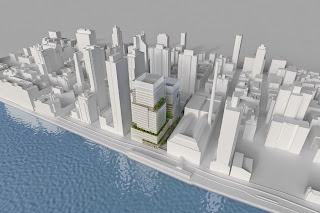Cuomo outlined a project to create better cohesion between the sprawling airport’s terminals, simplify its tangle of roadways and build a cavernous parking lot—potentially topped with green space—at the center of it.
It would also add a lane to the Van Wyck Expressway, a notoriously congested artery that state Department of Transportation Commissioner Michael Driscoll called one of the worst in the nation.
The overhaul will create an interconnected terminal layout, increased flights, centralized parking lots and new lanes on the unceasingly congested Van Wyck Expressway.
A state-of-the-art security system that would include facial recognition technology is also planned.
The Air Train would also gain benefits from the revamped airport, with service doubling and the number of cars increasing from two to four cars per train.
Other changes include world class amenities, expanded taxiways, and increased mass transit to the airport.
JFK's makeover is projected to cost a staggering $10 billion, exceeding LaGuardia Airport’s soon-to-begin $4 billion renovation.
Governor Cuomo stated that the plan to transform JFK is part of a “greater plan for reimagining our crossings and rebuilding our infrastructure in New York.”
The number of passengers moving through JFK every year is expected to nearly double over the next few decades, reaching 100 million by 2050 from around 60 million this year, according to the governor.
Cuomo did not disclose an estimated cost for the mass transit upgrades, but the scope of his plans would likely put the expense at more than $1 billion.
In 2015, plans were released for a luxury terminal for pets, named The Ark, along with an expansive 24,000-square-foot farm just outside of Terminal 5 for JetBlue Airways.
Visit Our Sponsors
Page Views
Since October 1, 2011















